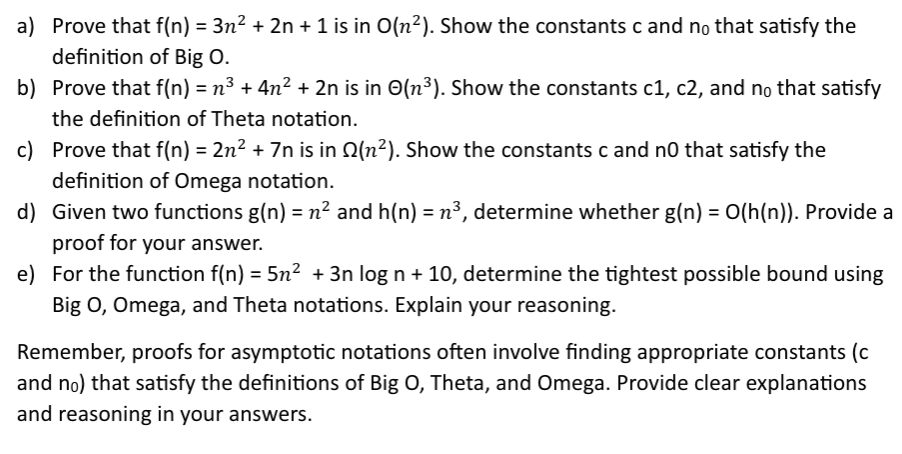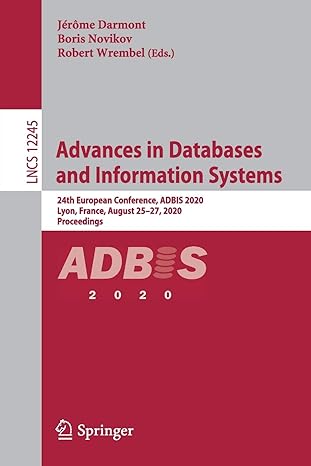Question
a) Prove that f(n)=3n^(2)+2n+1 is in O(n^(2)) . Show the constants c and n_(0) that satisfy the definition of Big 0 . b) Prove that
a) Prove that
f(n)=3n^(2)+2n+1is in
O(n^(2)). Show the constants
cand
n_(0)that satisfy the\ definition of Big 0 .\ b) Prove that
f(n)=n^(3)+4n^(2)+2nis in
\\\\Theta (n^(3)). Show the constants
c1,c2, and
n_(0)that satisfy\ the definition of Theta notation.\ c) Prove that
f(n)=2n^(2)+7nis in
\\\\Omega (n^(2)). Show the constants
cand
n0that satisfy the\ definition of Omega notation.\ d) Given two functions
g(n)=n^(2)and
h(n)=n^(3), determine whether ). Provide a\ proof for your answer.\ e) For the function
f(n)=5n^(2)+3nlogn+10, determine the tightest possible bound using\ Big O, Omega, and Theta notations. Explain your reasoning.\ Remember, proofs for asymptotic notations often involve finding appropriate constants (c\ and
n_(0)) that satisfy the definitions of Big
O, Theta, and Omega. Provide clear explanations\ and reasoning in your answers.

Step by Step Solution
There are 3 Steps involved in it
Step: 1

Get Instant Access to Expert-Tailored Solutions
See step-by-step solutions with expert insights and AI powered tools for academic success
Step: 2

Step: 3

Ace Your Homework with AI
Get the answers you need in no time with our AI-driven, step-by-step assistance
Get Started


